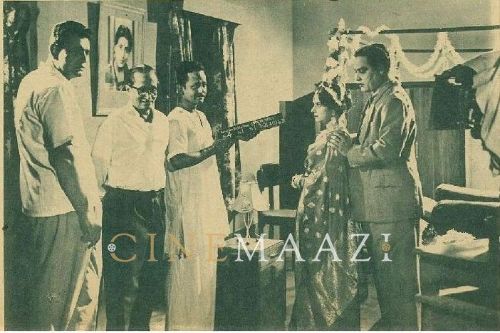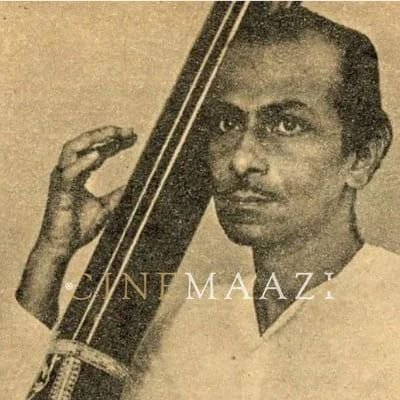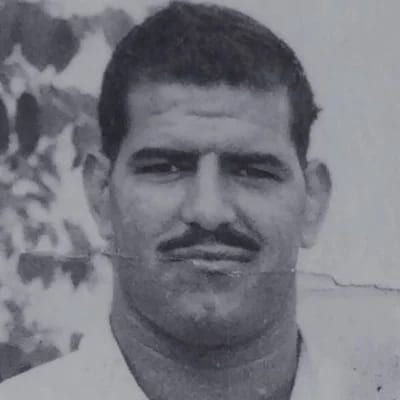Acharya Parvati Kumar
Subscribe to read full article
This section is for paid subscribers only. Our subscription is only $37/- for one full year.
You get unlimited access to all paid section and features on the website with this subscription.
Not ready for a full subscription?
You can access this article for $2 , and have it saved to your account for one year.
- Born: 27 February, 1921
- Died: 29 November, 2012
- Primary Cinema: Hindi
- Spouse: Sumati
Celebrated ‘Nrutya Maharshi’, renowned performer, scholar, and dance choreographer Acharya Parvati Kumar brought recognition to Indian classical dance at an international level. Deeply involved in the field of dance for over 60 years, he excelled in the classical dance forms of Kathak, Kathakali, and Bharata Natyam. In the period between 1947 and 1965, he choreographed over 20 dance dramas, the most acclaimed ones being Rhythm of Culture, Dekh Teri Bambai, Discovery of India, and Krishna Leela. He also choreographed dance dramas for children such as Panchatantra, Snow White and Seven Dwarfs, Billi Mausi Ki Fajiyat, Apna Hath Jagannath, and Durga Zali Gauri. His work in the sphere of cinema saw him choreograph dance sequences for several Hindi films including Raj Mukut (1950), Tumsa Nahin Dekha (1957), Rajkamal’s Kaale Gore (1960), Hum Hindustani (1960), and Jai Mahalaxmi Maa (1976), as well as regional films. His mission of focusing on the study and research of the Bharata Natyam dance form saw him establish Tanjavur Nrityashala in 1968, with him training students in the classical arts. His deep theoretical knowledge of the artform was reflected in his style of teaching and its practice. He also conducted an intensive study of the Marathi Nirupanas composed by Sarfoji Maharaj Bhonsle, the ruler of Tanjavur in the early 1800s. As a consequence of this research, his Tanjavur Nritya Prabandha was published by the Maharashtra Sahitya and Sanskriti Mandal. He went on to choreograph these nirupanas, or repertoires and presented the same on stage in New Delhi, Chennai, Mumbai, and several other Indian cities. For his numerous contributions, Acharya Parvati Kumar was bestowed with several honours including awards from the Government of Maharashtra, the F.I.E. Foundation, the Sangeet Natak Academy, the Sahitya Sangh Mandir, Bombay Sursingar Samsad, and the Little Ballet Troupe. He is also a recipient of the Sangeet Natak Academy Award as well as the Maharashtra Gaurav Puraskar.
Born on 27 February, 1921, he trained in Kathak, Kathakali and Bharata Natyam under well reputed maestros. While he was taught the intricacies of Bharata Natyam under Guru Chandrashekhar Pillai, he also learned several compositions from Guru Mahalingam Pillai and Smt Maylapur Gauri Amma. He also learned Kathakali from Guru Karunakar Panikar and Kathak from Guru Ratikant Arya and Guru Sunder Prasad. A Sanskrit scholar, he had great knowledge of texts like Bharata's Natya Sastra and Nandikesvara's Abhinaya Darpanam. His special contribution in choreographing the compositions of Maratha rulers like Shahaji and Sambaji for dance is commendable.
Acharya’s work in Hindi cinema films saw him work on astonishing dance sequences in several films between 1950 and 1968. These include Gauna (1950), Daag (1952), Badshah (1954), Hum Hindustani (1960), Ek Musafir Ek Hasina (1962), Dil Deke Dekho (1959), Tumsa Nahin Dekha (1957), Mr. X (1957), Dhola Maru (1956), Raj Mukut (1950), and Jai Mahalaxmi Maa (1976). He also choreographed dance sequences for regional films such as the Marathi films Postatil Mulgi (1954), and Prem Andhla Asta (1962), as well as the Telugu film Gudi Gantalu (1965).
As an acclaimed Bharata Natyam exponent and teacher, he helped shape the professional career of several artists of the dance form. He was known to always aspire for perfection and was meticulous in his teaching of the basic 'adavus' or movements. Students would have to do the same movement repeatedly in case they made a mistake, and only then would he move on to teaching the next step. Learning the complete Bharata natyam margam from Acharya was thus a herculean task. He considered a minimum of 10 to 15 years as necessary to complete the margam and ascend the stage to become a professional performer. Once completed, however, the learner became a fine expert of the dance form who would be thoroughly well-versed in the theoretical aspects and significance of Indian classical dance, which is comparatively rare. Among his prominent disciples on the national and international level are Sucheta Bhide Chapekar, Dr Sanddhya Pureccha, and Guru Kirti Naik.
With his greatest contributions being the Thanjavur bani and the Marathi compositions based on Carnatic music, he interpreted another text in the Bharata Natyam style, namely Nandikesvarao’s Abhinaya Darpanam. It explains in detail the varied usage of body, the numerous corporeal and sensory movements, including the usage of eyes, neck, head, and the expressive hand gestures (hasta mudras) famously employed to narrate any story of Hindu mythology.
A follower of the simple living, high thinking philosophy, Acharya did not care for name or fame. Maintaining a low profile, he stayed true to his ideology and convictions. A firm believer in the value of art as worship, he emphasised that only absolute hard work and determination could make a dancer complete, and that there was no shortcut to success.
Amongst his overseas tours, he was notably invited to Paris to present the ballet 'Dekh Teri Bambai' in 1959 on the invitation of Theatre de Nations, sponsored by the Indian National Theatre. He also visited Romania and Hungary in 1969 on a cultural tour which was sponsored by the Ministry of Education, Government of India. He was a member of the General Council of the Sangeet Natak Academy, New Delhi (1980–1982), and was also appointed as a member of the committee for the selection of young artists, by the Ministry of Education, Government of India (1978–1979).
His wife Sumati was also a teacher and scholar of dance.
Acharya Parvati Kumar passed away on 29 November, 2012.
References
http://saptakam.pbworks.com/w/page/61645460/Tribute%20to%20Acharya%20Parvati%20Kumar#.YaO1rdBBxPZ
https://www.freepressjournal.in/featured-blog/dr-sandhya-purechas-epic-tribute-for-bharat-natyam-mentor-acharya-parvati
https://narthaki.com/info/profiles/profl149.html






.jpg)




